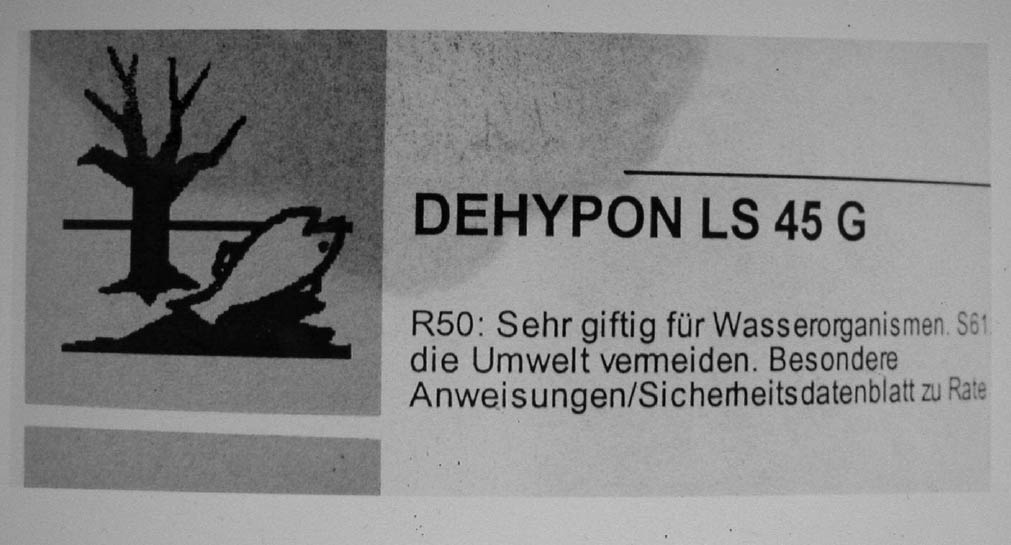FINDING SUBSTITUTE SURFACTANTS FOR SYNPERONIC NJOHN A. FIELDS, ANDREW WINGHAM, FRANCES HARTOG, & VINCENT DANIELS
13 ECOLOGICAL LABELING OF SURFACTANTSSurfactants by their very nature are harmful to living things, as they alter the properties of membranes surrounding cells. The European Chemicals Hazard Information and Packing (CHIP) for supply regulations require labeling of materials that are potentially ecologically dangerous. Products with a concentration that is lethal to 50% of the population of a given species (LC50) at less than 1 mg per L must bear a label with a dead fish and tree on it (fig. 10) and the associated R50 risk phrase:“This product will cause damage to the environment.” Containers of surfactants Synperonic N, Imbentin 136/070, and Dehypon LS45 should have this label. However, Synperonic 91/6 has an LC50 of 10–100 mg per L and does not bear this label. It has been noticed that when replacement surfactants have been given to conservators for trial, many do not wish to use the products with the dead-fish-and-tree label. These conservators may prefer to use Synperonic 91/6. The apparent importance of the labeling problem is diminished when it is realized that the labeling refers to surfactant discharged straight into water courses, although, in practice, water from workshops first goes into sewage treatment plants where surfactants are deactivated by biodeterioration. Thus, the choice of a surfactant from those recommended here does not need to be influenced by labeling requirements. ACKNOWLEDGEMENTSWe would like to thank Susan Bradley (head of Conservation Research, British Museum) for her support and encouragement; Dr. Judy Daniels of Uniqema for her time and her knowledge of the surfactant industry; Pippa Cruikshank (organics conservator, British Museum) for assisting in evaluations; David Howell (conservation scientist, Royal Historic Palaces) for the loan of the shaker; and Professor John Seddon (Department of Chemistry, Imperial College, London) for the facilities to perform the CMC experiments. Many of the results from this work, including data on all 24 surfactants tested and background information, can be found in Andrew Wingham's dissertation, which is published, in part, at www.collectablegifts.net/synperonic/synperonic.htm.
|
